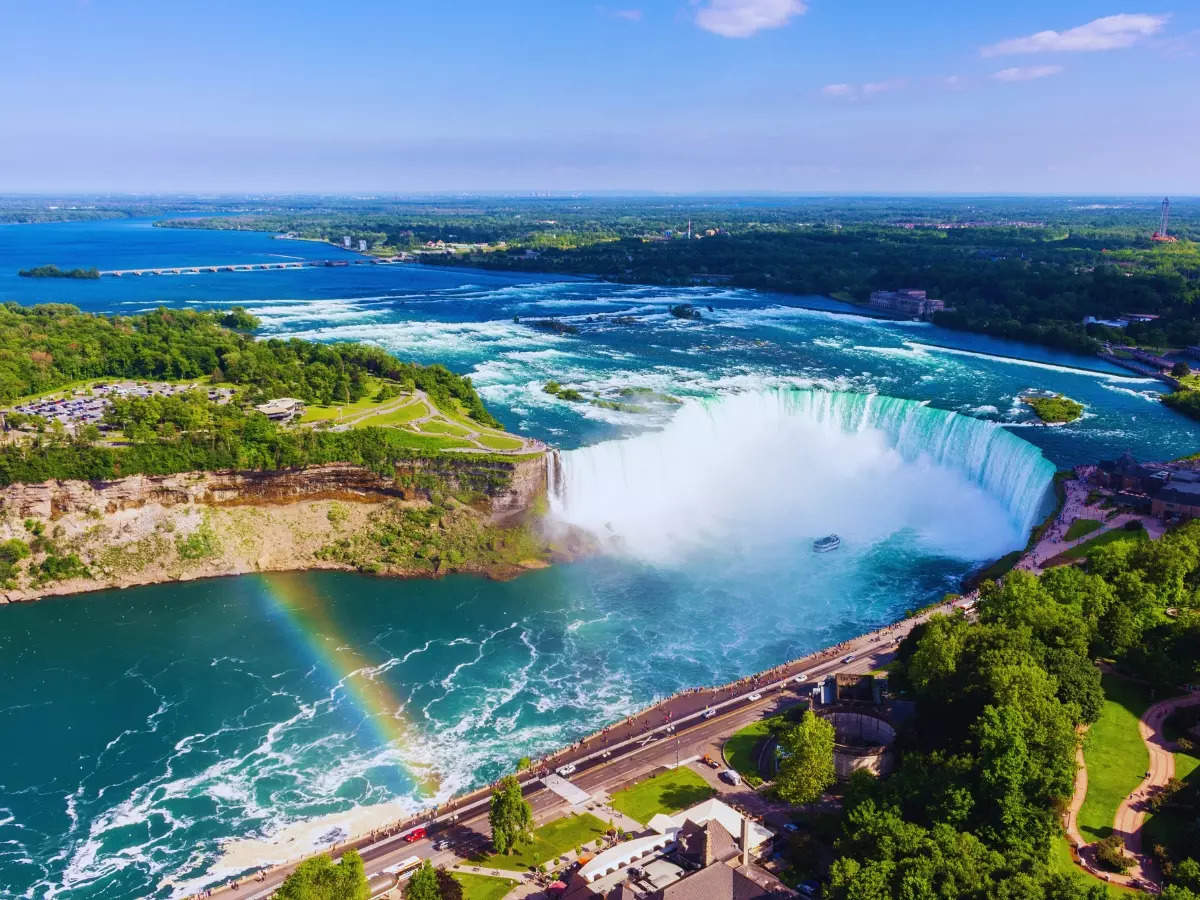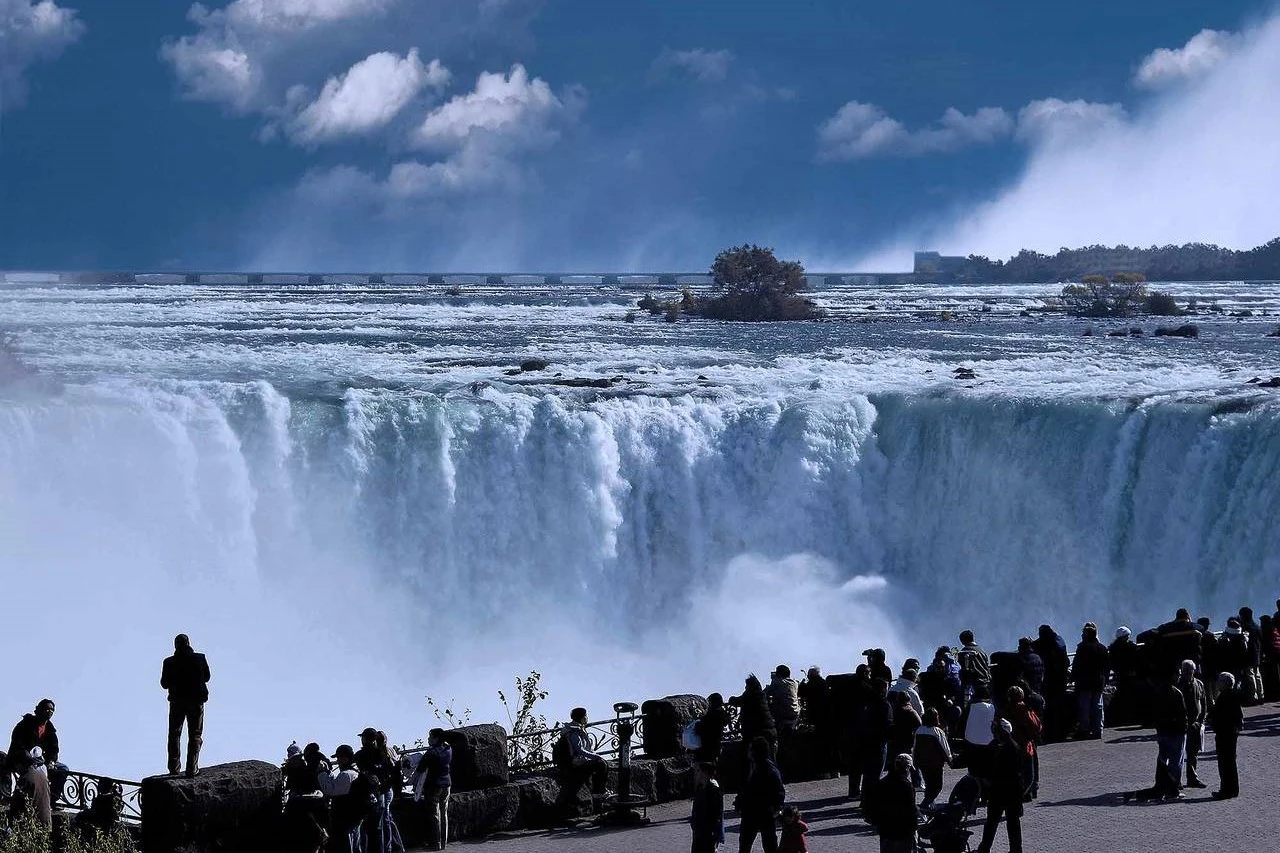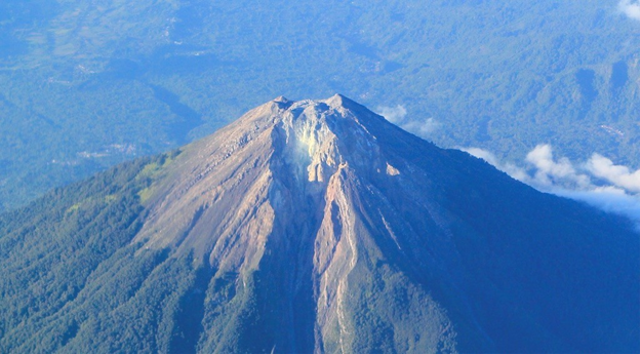Experience the awe-inspiring beauty and raw power of Niagara Falls, nature’s most magnificent masterpiece. Nestled between the United States and Canada, this iconic landmark draws millions of visitors each year, leaving them breathless and yearning for more. With its thundering roar and majestic cascades of water, Niagara Falls is a testament to the awe-inspiring force of nature.
Standing at the edge of the falls, you can feel the mist gently caress your face as you witness thousands of gallons of water crashing down every second. The sheer magnitude of the falls is overwhelming, and the landscape it creates is nothing short of spectacular. From the American Falls to the Horseshoe Falls, every angle offers a unique perspective and showcases the incredible power of Mother Nature.
Whether you’re taking a boat tour to get up close and personal with the falls or simply gazing in wonder from one of the many viewpoint areas, Niagara Falls is an experience that will leave an slot gacor indelible mark on your soul. So, embark on a journey to witness this natural wonder and prepare to be captivated by the unforgettable power of Niagara Falls.
History and Formation of Niagara Falls
Niagara Falls has a rich history that dates back thousands of years. The falls were formed during the last Ice Age, around 12,000 years ago, when glaciers melted and retreated, carving out the Great Lakes. As water from Lake Erie began to flow into Lake Ontario, it cut through the Niagara Escarpment, resulting in the stunning waterfalls we see today. The geological processes that shaped the falls are a fascinating story of nature’s relentless forces at work.
The history of human interaction with Niagara Falls is equally compelling. Native American tribes, including the Iroquois and Algonquin, revered the falls as a sacred place. They believed the rushing waters were inhabited by powerful spirits. European settlers first encountered the falls in the 17th century, and their awe inspired stories and myths that have been passed down through generations. The beauty of Niagara Falls soon captivated explorers and settlers alike, turning it into a symbol of natural wonder.
In the 19th century, Niagara Falls transformed into a major tourist destination, with the advent of railroads making it more accessible. The establishment of parks and viewing areas allowed visitors to experience the falls up close. Throughout the years, various preservation efforts have been made to maintain the natural beauty and ecological health of this landmark. Today, Niagara Falls stands not only as a breathtaking spectacle but also as a testament to the enduring legacy of both nature and human fascination.

Interesting Facts about Niagara Falls
Niagara Falls is filled with intriguing facts that contribute to its mystique. For instance, did you know that approximately 168,000 cubic meters of water plunge over the falls every minute? This staggering volume creates a breathtaking display of power and beauty that draws millions of visitors each year. Additionally, the average height of the falls is around 167 feet, making it one of the tallest waterfalls in North America.
Another fascinating aspect of Niagara Falls is its international significance. The falls straddle the border between the United States and Canada, with the American Falls located in New York and the Horseshoe Falls situated in Ontario. This unique geographical arrangement has led to a rich cultural exchange and collaboration between the two nations. The illumination of the falls at night, a spectacular light show that highlights its natural beauty, has become a beloved tradition that attracts visitors from around the world.
Moreover, the falls have played a significant role in history. They served as a backdrop for numerous iconic events, including tightrope walks and daredevil stunts. The most famous of these was performed by Charles Blondin, who crossed the falls on a tightrope in 1859. This daring feat captivated audiences and solidified Niagara Falls as a stage for human courage and determination. With so many intriguing facts and stories intertwined with its history, Niagara Falls continues to be a source of fascination for both visitors and researchers alike.
The Geographical Location of Niagara Falls
Niagara Falls is strategically located along the border of the United States and Canada, making it easily accessible for tourists traveling from both countries. Situated in the northeastern part of North America, the falls are approximately 27 miles north-northwest of Buffalo, New York, and 75 miles south-southeast of Toronto, Canada. This prime location makes it a popular destination for travelers seeking a natural wonder combined with urban amenities.
The falls are part of the Niagara River, which connects Lake Erie to Lake Ontario. This river not only provides the stunning backdrop for the waterfalls but also plays a vital role in the ecosystem. The surrounding area is rich in biodiversity, with various species of plants and animals that thrive in the unique habitats created by the falls and its mist. The geographical features of the region, including the Niagara Escarpment, further enhance the natural beauty and ecological significance of the area.
In addition to its geographical beauty, Niagara Falls is surrounded by charming towns and cities that offer visitors a range of activities and attractions. From the bustling city of Niagara Falls, Ontario, to the quaint village of Lewiston, New York, there are plenty of opportunities to explore the local culture, cuisine, and history. The falls serve as a focal point for these communities, drawing in visitors and providing a sense of identity and pride for the residents.
The Three Waterfalls that Make Up Niagara Falls
Niagara Falls is comprised of three distinct waterfalls: the American Falls, the Bridal Veil Falls, and the Horseshoe Falls. Each waterfall has its unique characteristics and charm, contributing to the overall splendor of this natural wonder. The American Falls, located on the U.S. side, is known for its sheer vertical drop and breathtaking views. It spans approximately 1,060 feet in width and cascades down 70 to 100 feet, depending on water levels.
The Bridal Veil Falls, the smallest of the three, is situated adjacent to the American Falls. It is separated from the American Falls by Goat Island, which provides a tranquil setting for visitors to enjoy the beauty of both waterfalls. The Bridal Veil Falls is characterized by its delicate veil-like appearance, which is particularly enchanting when sunlight creates rainbows in the mist.
The Horseshoe Falls, located on the Canadian side, is the largest and most powerful of the three. It measures about 2,600 feet in width and drops approximately 167 feet, making it one of the most impressive waterfalls in the world. The sheer volume of water that flows over the Horseshoe Falls creates a thunderous roar and a mesmerizing display of mist that envelops the area. Together, these three waterfalls create a breathtaking spectacle that showcases the incredible beauty and force of nature.

The Power and Force of Niagara Falls
The power of Niagara Falls is not just in its breathtaking appearance, but also in the sheer force of the water that cascades over its edges. The falls are fed by the Great Lakes, which hold about one-fifth of the world’s freshwater supply. This immense volume of water results in an incredible flow rate that can reach up to 750,000 gallons per second during peak flows. The tremendous energy generated by the falls has been harnessed for hydroelectric power, making it an essential resource for the surrounding region.
The sound of the rushing water is another aspect that emphasizes the power of Niagara Falls. The roar of the falls can be heard from miles away, creating an auditory experience that complements the visual spectacle. As visitors approach the falls, they can feel the vibrations beneath their feet, a reminder of the raw power of nature. This sensory experience leaves a lasting impression, compelling visitors to connect with the environment on a deeper level.
Furthermore, the natural processes that shape Niagara Falls are ongoing. Erosion and geological activity continue to impact the landscape, causing the falls to recede at an average rate of about one foot every ten years. This constant change serves as a reminder of the dynamic forces at work in nature, making it clear that Niagara Falls is not just a static attraction, but a living representation of the power of water and time. Visitors are encouraged to appreciate the falls, not only for their beauty but also for the incredible forces that have shaped them.
Activities and Attractions at Niagara Falls
Niagara Falls offers a wide array of activities and attractions for visitors of all ages. One of the most popular experiences is the iconic Maid of the Mist boat tour, which takes guests on a thrilling journey right up to the base of the falls. As the boat navigates through the mist and tumultuous waters, passengers are enveloped in the sheer power of the falls, creating an unforgettable experience. Equipped with ponchos to shield against the spray, visitors are encouraged to enjoy the exhilarating ride and capture stunning photos of the falls from a unique perspective.
For those seeking a more adventurous experience, the Cave of the Winds is a must-visit attraction. This guided tour takes visitors down wooden walkways to the base of the Bridal Veil Falls, where they can stand just feet away from the rushing water. The experience is both exhilarating and educational, as guides share fascinating information about the geology and history of the area. The Thunder Alley section, where the water crashes down with tremendous force, is an unforgettable highlight that showcases the raw power of nature.
Additionally, the Niagara Parks Butterfly Conservatory offers a serene escape from the hustle and bustle of the main attractions. Home to over 2,000 butterflies, this indoor tropical paradise allows visitors to stroll through lush gardens and observe these delicate creatures up close. The contrast between the vibrant colors of the butterflies and the natural beauty of the falls makes for an enriching experience that highlights the diversity of life in the region.
Best Viewpoints and Photo Opportunities at Niagara Falls
Capturing the beauty of Niagara Falls through photography is a rewarding experience, and there are numerous viewpoints that provide stunning perspectives. One of the most popular spots is the observation tower located on the American side, which offers panoramic views of both the American and Horseshoe Falls. From this vantage point, photographers can capture breathtaking images of the falls illuminated by sunlight or the colorful lights during the evening illumination.
Another excellent location for photography is Queen Victoria Park, situated on the Canadian side. This beautifully landscaped park offers a range of viewpoints, making it an ideal spot for capturing the falls in all their glory. The flower gardens and walking paths create picturesque settings for photos, allowing visitors to frame the falls amidst vibrant blooms. The park also hosts numerous events and festivals throughout the year, further enhancing the experience for those looking to snap memorable shots.
For a unique perspective, consider exploring the viewpoints offered by helicopter tours. These exhilarating flights provide a bird’s eye view of the falls, allowing photographers to capture sweeping vistas of the surrounding landscape. The aerial perspective showcases the sheer scale of Niagara Falls and its impressive geography, making it an unforgettable experience for anyone passionate about photography. Whether from the ground or the sky, the opportunities to capture the beauty of Niagara Falls are endless.

Tips for Visiting Niagara Falls
To make the most of your visit to Niagara Falls, it’s essential to plan ahead and consider a few practical tips. First and foremost, timing your visit can greatly influence your experience. The peak tourist season runs from late spring to early fall, drawing large crowds. If you prefer a quieter experience, consider visiting during the shoulder seasons of late fall or early spring when the weather is still pleasant and the falls are less crowded.
When it comes to attire, dress in layers to accommodate changing weather conditions. The mist from the falls can create a cooling effect, especially in the summer, so wearing a light jacket or poncho is advisable. Comfortable walking shoes are also a must, as exploring the various viewpoints and attractions requires considerable walking. Additionally, don’t forget your camera or smartphone to capture the breathtaking sights.
Lastly, be sure to take advantage of the various visitor services available at Niagara Falls. Information centers provide maps and brochures, helping you navigate the area and discover hidden gems. Consider purchasing a Niagara Falls Adventure Pass, which offers discounted access to popular attractions and transportation options. With careful planning and a sense of adventure, your visit to Niagara Falls will be an unforgettable experience.
Conclusion: The Awe-Inspiring Beauty of Niagara Falls
In conclusion, Niagara Falls stands as one of the most awe-inspiring natural wonders in the world. Its breathtaking beauty, powerful cascades, and rich history create an unforgettable experience for all who visit. From the thundering roar of the water to the mist that envelops you, every moment spent at the falls is a reminder of nature’s incredible power and artistry. If you like reading this article then please consider visiting ubudtropical to find more article like this.




